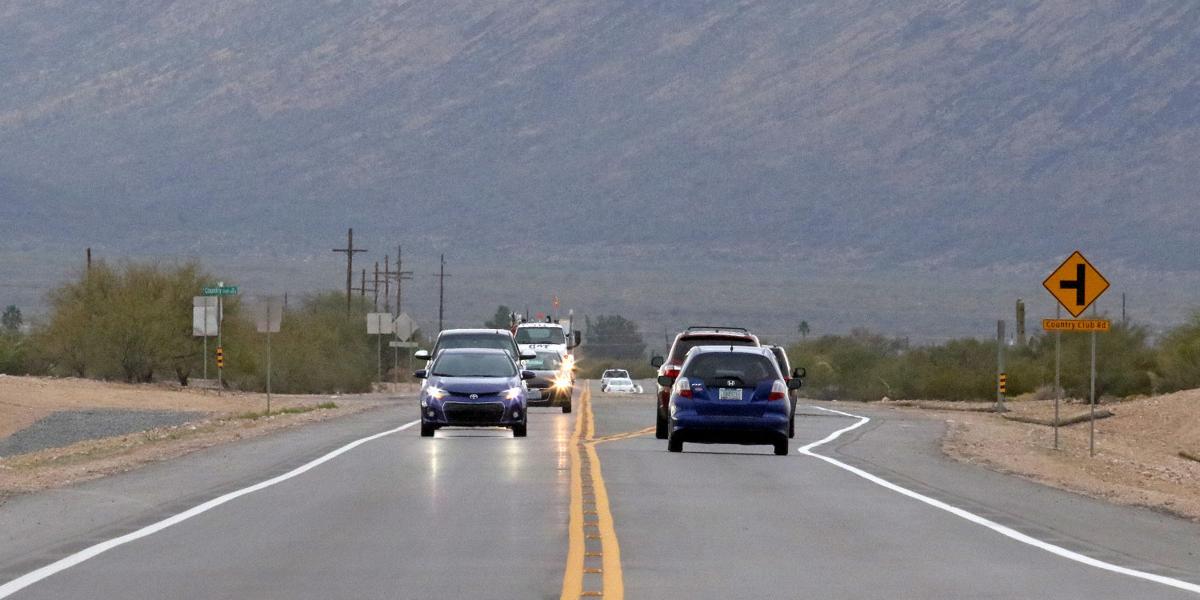Even after the failure of the $815-million bond proposal in November, regional leaders have determined not to allow one aspect of the plan to die.
“The Sonoran Corridor is our economic future,” said Pima County Supervisor Sharon Bronson.
Government planners see the Sonoran Corridor, a proposed connection between interstates 10 and 19, to run south of Tucson International Airport, as a prime location for expansion of regional transportation and distribution networks.
County leaders also envision the proposed highway connection as a catalyst for economic expansion in the aerospace, defense and manufacturing industries.
In a rare joint meeting, Bronson and County Administrator Chuck Huckelberry sat in with the Tucson City Council earlier this month to discuss ways to work together on the plan.
Bronson said one of the things to come out of that meeting was a plan to establish what she described as an ad-hoc committee committed to the planning and development of the corridor project.
In addition, Bronson said a private industry component should be included.
“We need to form this group that has public sector members and, in my view, there needs to be major private sector players involved,” she said.
Tucson and Pima County, two governments frequently at odds, also plan to bring in federal and state officials and other elected leaders to further the development.
“The region has really stepped up to this,” said John Moffatt, Pima County’s director of strategic planning.
There’s good reason for all the cooperation, Moffatt said. “This is the major employment center of the future for this region,” he said.
The long-term goal of developing the corridor lies in diversifying the regional economy.
A county-commissioned economic impact report released in October estimated development of the area would eventually pour as much as $32 billion annually into the region’s economy.
Moffatt said the entire 51,000-acre undeveloped area in the corridor region would likely be under development for the next three to four decades before achieving build out.
“Without this piece, this region is going to forever be a call-center region,” Tucson City Councilman Steve Kozachik said.
Looking at the Southern Arizona map, Kozachik said, no other area sits at such a key confluence of rail, land and air transport as the corridor development area.
East-west rail lines cross just to north and another comes north from Mexico along I-19. The interstates flank the planned corridor and the airport stands to the north.
“There’s no other place in the region that make this much sense,” Kozachik said.
It’s not only local politicians and government officials who say the Sonoran Corridor plan has the potential to a lasting economic impact in Southern Arizona.
A study by Arizona’s Council of Governments concluded that the area was ideal for developing a transportation and distribution network.
“The Tucson International Airport focus area is ideal to serve the role as a Import Distribution Facility in the Sun Corridor supply chain process, which focuses on accepting imports and redirecting to precise markets,” the report reads.
The focus area of the report mirrors that which regional leaders identify as the Sonoran Corridor.
Arizona’s Council of Governments is a partnership of regional government councils such as the Maricopa Association of Governments, Pima Association of Governments and numerous state-level departments.
The report also notes the county’s plans to attract additional aerospace and defense companies near the airport meshes well with the transportation network plan.
“Pima County and local partners are in the process of developing a Aerospace Defense Research Business Park south of Tucson International Airport that will provide key infrastructure improvements for existing businesses but will also create opportunities for new growth by creating a high tech multimodal transportation corridor,” the report reads.
At least one company has relocated to the area.
Earlier this year the national home furnishings retailer HomeGoods announced plans to build a distribution center east of Tucson International Airport.
Construction of the company’s more than 500,000-square-foot facility is underway. It plans to eventually employ more than 900 people.
“Once we get two or three more wins people will see this is real,” Kozachik said.
The next win could come sooner than many thought.
Huckelberry said county officials have been in negotiations with a company interested in locating a large facility south of TIA along the newly named Aerospace Parkway.
While unable to name the company because of non-disclosure agreements, Huckelberry said as many as 500 new jobs could be located at the facility.
Moffatt said out-of-state companies with large land requirements and access to existing and potential new links to transportation networks have expressed interest in the region.
“The reason we are getting more interest is the fact that we have large parcels,” Moffatt said.
Moffatt said numerous companies have inquired about 500- to 1,000-acre parcels.
Part of the attraction is the availability of such tracts of land that aren’t remote and far-flung acreage. He said similarly sized sections of land are increasingly unavailable in the Phoenix area except for distant west-Valley areas.
Arizona’s delegation in the U.S. Congress also has gotten behind the corridor plan, working to acquire federal funding for the entire proposal.
The corridor was recently included as a high-priority project on the multi-year federal highway spending bill.
No specific dollar amounts have been earmarked to the plan, but the high-priority designation greatly increases the chances for federal funding.
Bronson said a local funding component would almost certainly be needed to make the plan reality.
She said a $50 million local investment could be met with more than 10 times that amount in federal matching funds.
“If there’s no local match this is not going to happen,” she said.
A single-question bond election would be the most likely funding mechanism, Bronson said.
Estimates for the complete connection, which in some configurations would span a 14-mile stretch from I-10 near South Rita Road to I-19 near West Pima Mine Road, put total costs of the project at $600 million.





